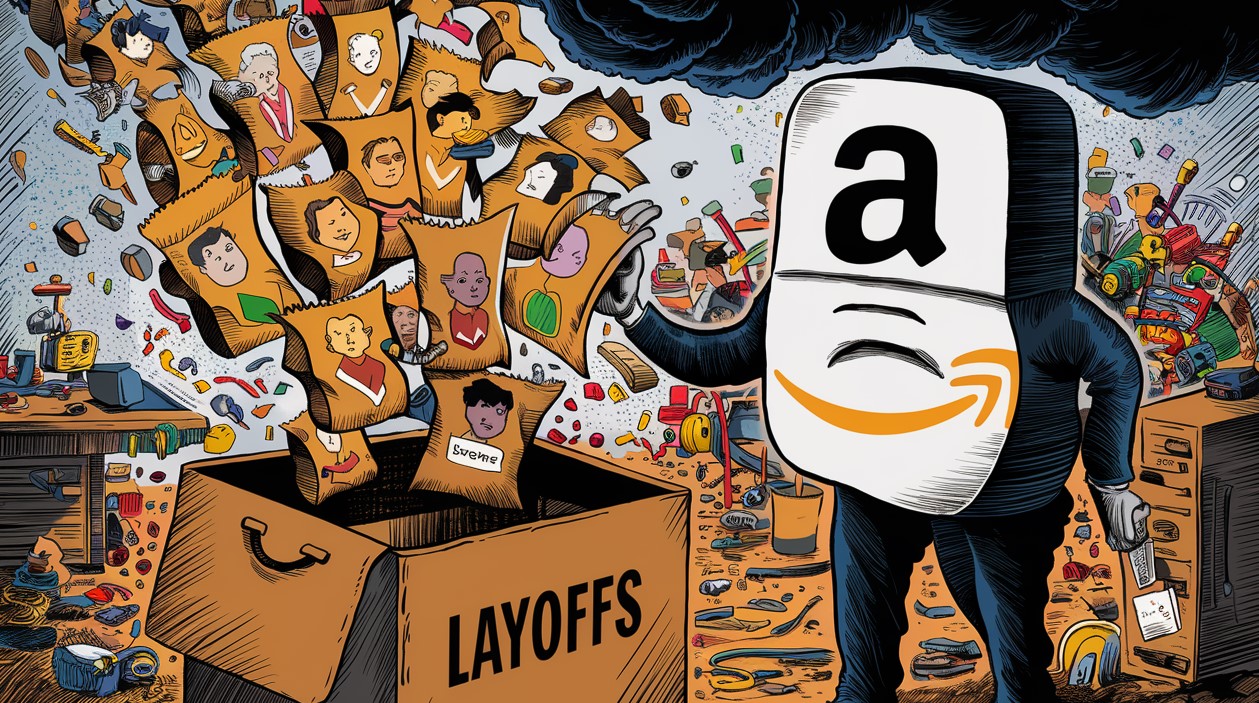Amazon is a global giant in e-commerce, technology, and various other sectors. When such a large company undergoes layoffs, the effects are widespread, impacting not just the employees, but the broader economy as well. Understanding the economic ripple effect of Amazon layoffs is crucial to grasp the full scope of these events.
Why Are There Amazon Layoffs?
Amazon layoffs are happening for several reasons. Sometimes, companies need to cut costs. They do this by reducing the number of employees. Other times, changes in technology mean that fewer workers are needed. Amazon layoffs can also happen when the company changes its focus. For example, if Amazon decides to stop a certain project, the workers on that project might lose their jobs.
Amazon Layoffs in Different Countries
Amazon operates in many countries around the world. This means that Amazon layoffs can happen in different places. The reasons for the layoffs might be different in each country. For example, changes in the local market or economy can lead to layoffs. Amazon layoffs in different countries can affect workers and communities in unique ways.
What Happens to Workers After Amazon Layoffs?
When Amazon layoffs happen, workers lose their jobs. This can be very difficult for them. They need to find new jobs. Some might get help from Amazon to find new work. Others might need to look for jobs on their own. Amazon layoffs can cause a lot of stress and worry for the workers and their families.
How Do Amazon Layoffs Affect the Company?
Amazon layoffs can also affect the company. Sometimes, it can save money. But it can also hurt the company's reputation. People might think that Amazon is not a good place to work. This can make it harder for Amazon to hire new workers in the future. Amazon layoffs can also affect the company's ability to get work done. With fewer workers, it might take longer to complete projects.

Direct Impact on Employees
The immediate and most obvious impact of Amazon layoffs is on the employees who lose their jobs. These individuals face sudden unemployment, which leads to a loss of income. This can result in financial stress as they may struggle to pay bills, mortgages, or rent, and other living expenses. The psychological impact can also be significant, as job loss often leads to anxiety and uncertainty about the future.
Additionally, laid-off employees may find it difficult to quickly secure new employment, especially if the layoffs are part of a broader economic downturn. The competition for available jobs may increase, making it harder for these individuals to find suitable positions. This extended period of unemployment can further exacerbate financial and emotional strain on the affected workers and their families.
Local Economic Effects
When a significant number of Amazon employees are laid off in a specific area, the local economy can feel the strain. These workers typically spend their earnings in local businesses, such as restaurants, stores, and service providers. When they lose their jobs, their spending power decreases, which can lead to reduced revenue for these businesses. This decrease in consumer spending can result in further layoffs and closures of local businesses, creating a negative feedback loop.
Moreover, the decline in local business revenues can lead to a decrease in tax income for local governments. This can result in budget shortfalls, potentially leading to cuts in public services and infrastructure projects. The overall quality of life in the community may decline as a result, impacting not just those directly laid off by Amazon, but the wider population as well.
Impact on Housing Market
The housing market can also be affected by Amazon layoffs. Laid-off employees may struggle to make mortgage or rent payments, leading to an increase in defaults and foreclosures. This can depress the housing market in affected areas, leading to lower property values and a decrease in new housing developments. For renters, an increase in vacant properties can lead to lower rental prices, but also potential neglect of properties as landlords' income decreases.
Additionally, a depressed housing market can discourage new investments in the area. Potential homebuyers may be hesitant to purchase property in a region with declining property values and high unemployment rates. This can further slow down economic recovery and prolong the financial difficulties faced by the community.
Broader Economic Consequences
The ripple effect of Amazon layoffs extends beyond the local level. When a large company like Amazon reduces its workforce, it can signal broader economic trends. Investors may perceive these layoffs as a sign of declining business performance or economic instability, leading to decreased stock prices and reduced investment in the company and sector.
This loss of investor confidence can have a cascading effect on other companies within the same industry. Competitors and suppliers may also see a drop in their stock prices and face challenges in securing new investments. The overall business climate can become more cautious, potentially leading to a slowdown in economic growth and innovation.
Supply Chain Disruptions
Amazon is a major player in various supply chains. Layoffs can disrupt these supply chains, affecting suppliers and manufacturers who rely on Amazon's business. Reduced demand for products and services can lead to layoffs and reduced production in these partner companies, further amplifying the economic ripple effect.
For small businesses and startups that depend on Amazon for distribution or sales, these layoffs can be particularly devastating. They may experience delays, reduced sales, and increased costs, making it harder to sustain their operations. The overall efficiency of the supply chain can decrease, impacting the availability and pricing of goods for consumers.
Government and Public Services
Increased unemployment due to Amazon layoffs can lead to higher demand for government assistance programs, such as unemployment benefits, food assistance, and healthcare services. This can strain public resources and budgets, potentially leading to higher taxes or reduced services for the community.
Local and state governments may also face increased pressure to create job programs and provide retraining opportunities for laid-off workers. The need for such initiatives can place additional financial burdens on already stretched budgets, potentially affecting other public services such as education, transportation, and public safety.
Reemployment Challenges
Finding new employment can be challenging for laid-off Amazon workers, especially if the layoffs are part of a broader economic downturn. Workers may need to retrain or acquire new skills to find jobs in different industries. The longer it takes for these individuals to find new employment, the greater the economic impact on their families and communities.
The job search process can be time-consuming and stressful, particularly for older workers or those with specialized skills that may not easily transfer to other industries. Additionally, the availability of jobs that offer comparable salaries and benefits may be limited, leading to potential underemployment and continued financial hardship.

Psychological and Social Effects
The psychological impact of layoffs can lead to increased stress, depression, and anxiety among affected workers and their families. This can have broader social consequences, including increased demand for mental health services and a potential rise in social issues, such as substance abuse or family conflicts.
Communities may also experience a decline in social cohesion and an increase in crime rates as economic hardships mount. The loss of stable employment and the associated social status can lead to feelings of hopelessness and frustration, affecting the overall well-being and morale of the community.
Positive Outcomes and Mitigating Effects
Despite the negative impacts, there can be some positive outcomes from Amazon layoffs. Some workers may use the opportunity to start new businesses, pursue further education, or change careers. Additionally, if the layoffs are part of a strategic restructuring, Amazon may become more efficient and competitive in the long run, potentially leading to new job creation in the future.
Community and government support can also play a crucial role in mitigating the negative effects of layoffs. Job training programs, unemployment benefits, and mental health services can help affected workers transition to new opportunities. By providing these resources, communities can help ensure a more resilient and adaptable workforce.
Conclusion
The economic ripple effect of Amazon layoffs is complex and far-reaching. It impacts not only the laid-off employees but also local communities, the broader economy, and various stakeholders connected to Amazon. Understanding these effects can help policymakers, businesses, and communities develop strategies to mitigate the negative impacts and support affected individuals in finding new opportunities.
By addressing the immediate needs of laid-off workers and investing in long-term economic development, communities can recover from the challenges posed by layoffs. This holistic approach can help build a more sustainable and inclusive economy, capable of withstanding future disruptions.


